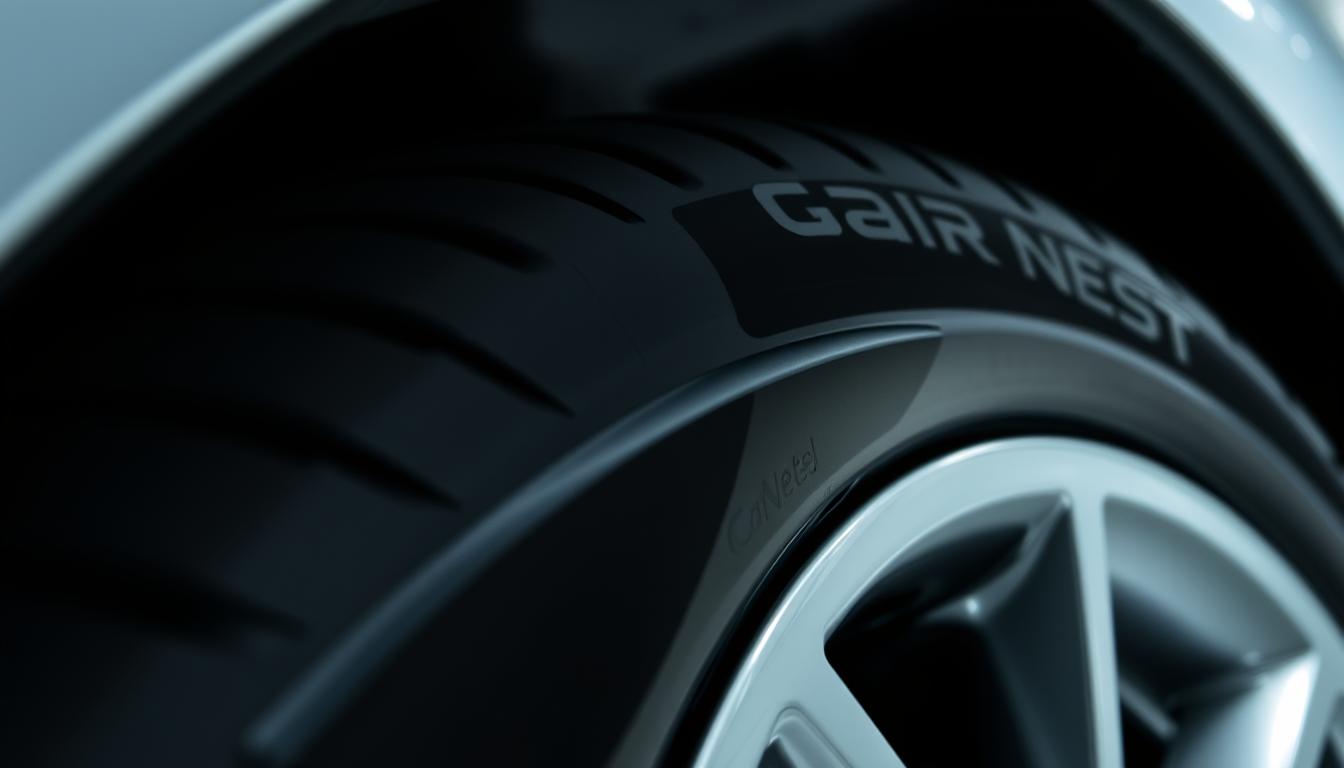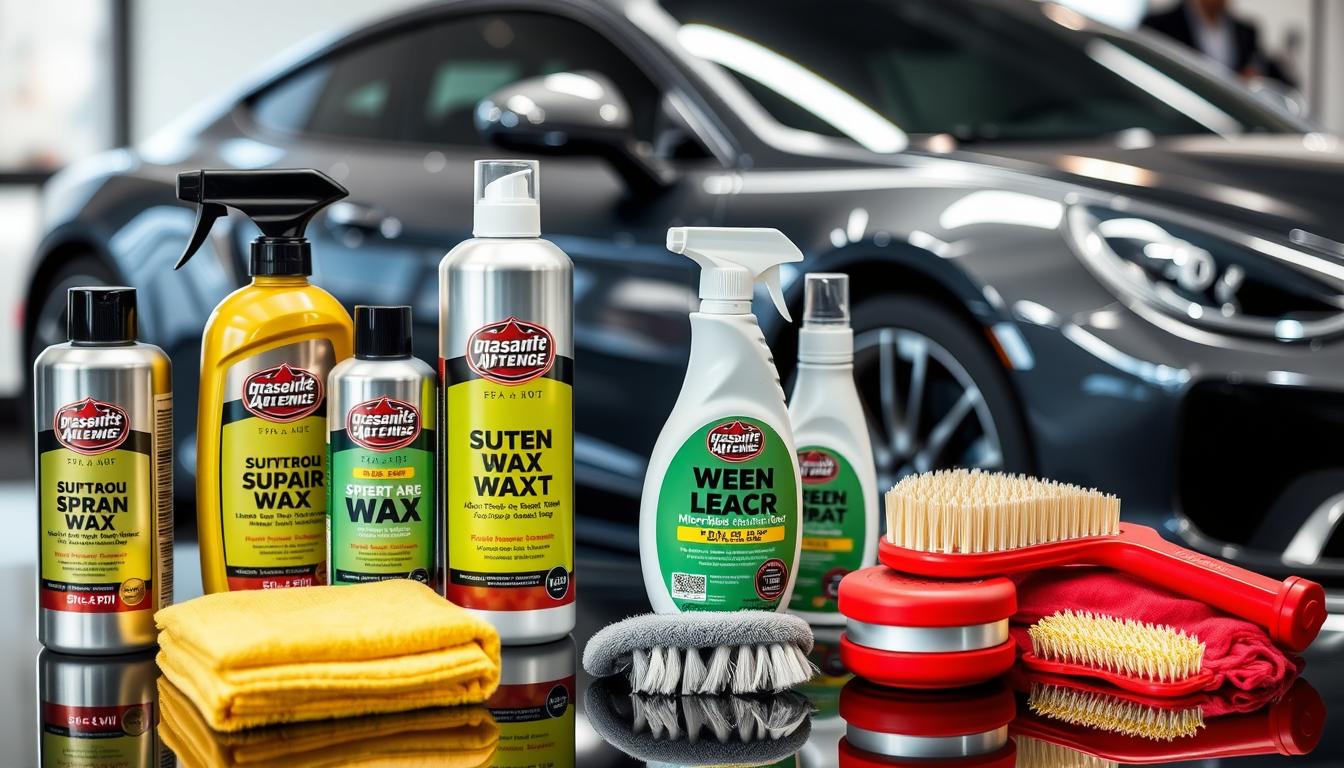Did you know that underinflated tires can lead to reduced fuel efficiency and increased risk of tire failure? Maintaining the correct tire pressure is crucial for the overall performance of your vehicle. Properly inflated tires provide longer life, better fuel efficiency, and a smoother ride.
Both underinflation and overinflation can cause issues like premature treadwear. Checking your vehicle’s recommended psi and maintaining it can significantly enhance your car’s handling and safety on the road.
Key Takeaways
- Proper tire inflation is essential for optimal vehicle performance and safety.
- Underinflated tires can lead to reduced fuel efficiency and increased risk of tire failure.
- Checking tire pressure monthly is recommended for maintaining optimal tire health.
- Proper tire pressure can enhance your vehicle’s handling and safety on the road.
- Rotating tires regularly can help extend their life.
The Importance of Proper Tire Pressure
The significance of proper tire pressure cannot be overstated, as it affects safety, performance, and economy. Proper tire inflation is fundamental to ensuring that your vehicle operates as intended.
Safety Benefits
Proper tire pressure directly impacts your safety on the road. It ensures optimal traction, handling, and braking capabilities. Correctly inflated tires provide better stability during emergency maneuvers and reduce the risk of blowouts and tire failures.
Performance Advantages
Maintaining the correct tire pressure improves your vehicle’s performance. It enhances steering response, handling precision, and overall driving comfort. Since your tires are the only point of contact between your vehicle and the road, their condition is critical to performance.
Economic Impact
The economic benefits of proper tire inflation are significant. It extends tire life, saving you money on premature replacements. Proper inflation also improves fuel efficiency by reducing rolling resistance, potentially saving you hundreds of dollars annually.
| Benefits | Description | Impact |
|---|---|---|
| Safety | Optimal traction, handling, and braking | Reduced risk of accidents |
| Performance | Enhanced steering response and handling | Better driving experience |
| Economy | Extended tire life and improved fuel efficiency | Cost savings on replacements and fuel |
Understanding Tire Pressure Basics
Tire pressure is a fundamental aspect of vehicle maintenance that directly impacts safety and performance. To grasp this concept fully, it’s essential to understand what tire pressure is and how it’s measured.
What PSI Means
PSI stands for pounds per square inch, a unit of measurement used to quantify tire pressure. Essentially, it measures the amount of air pressure inside your tires. For instance, if your tire is inflated to 35 PSI, it means that the air inside the tire exerts a pressure of 35 pounds per square inch on the tire’s walls.
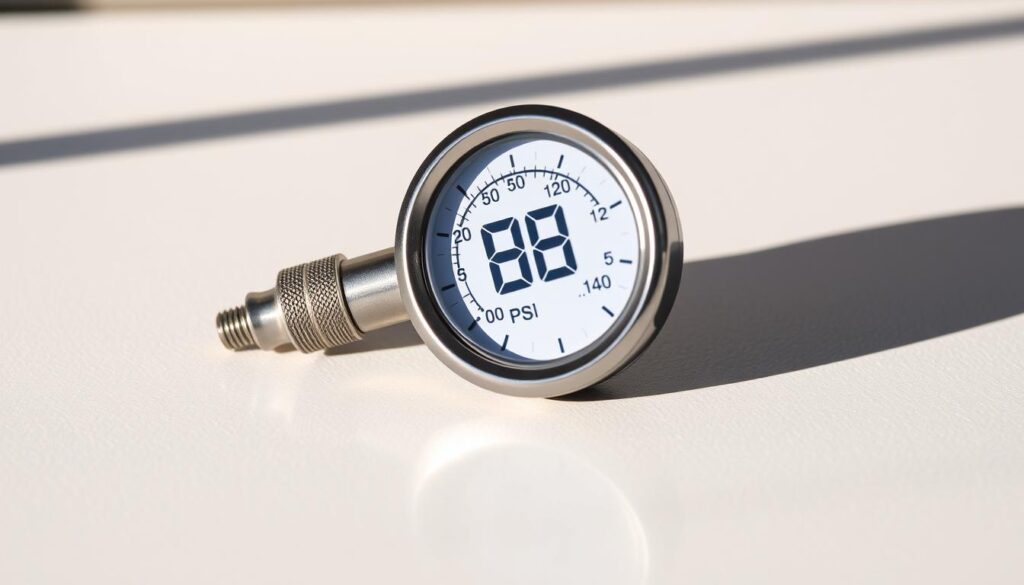
How Temperature Affects Tire Pressure
Temperature significantly affects tire pressure. For every 10°F change in ambient temperature, tire pressure typically changes by about 1 PSI. This means that as temperatures drop, tire pressure decreases, and as temperatures rise, tire pressure increases. It’s crucial to check tire pressure regularly, especially during seasonal changes, to ensure it remains at the recommended level. For more information on choosing the right tires for your vehicle, you can visit our expert advice page.
Essential Tools for Checking Tire Pressure
To maintain optimal tire pressure, having the right tools is crucial. You’ll need a reliable tire pressure gauge and an air compressor to check and adjust your tires’ PSI.
Tire Pressure Gauges
When it comes to tire pressure gauges, you have digital and analog options. Digital gauges offer clear, precise readings and are easier to use, especially in low-light conditions.
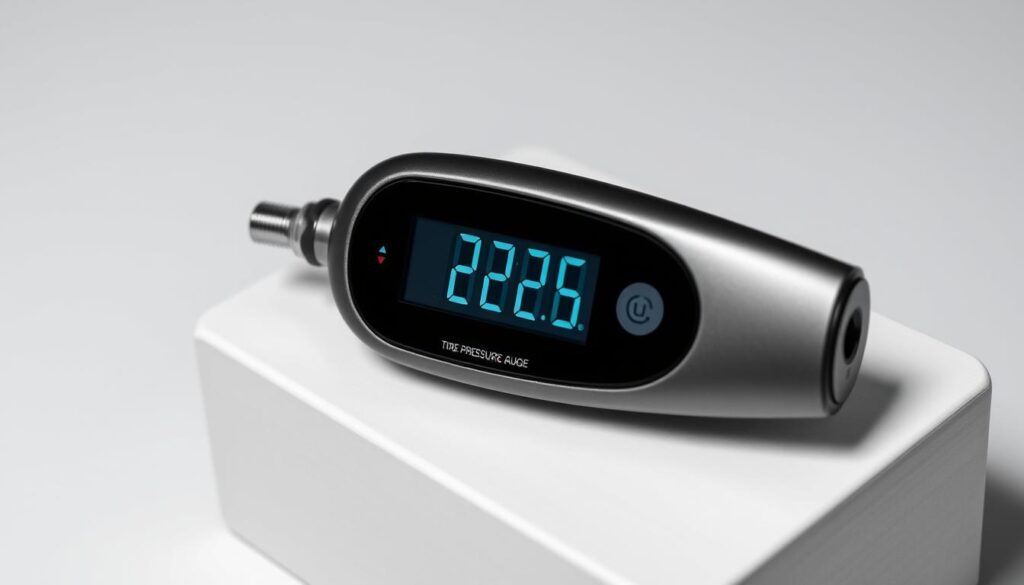
Air Compressors
For air compressors, consider portable options that connect to your vehicle’s 12V outlet for convenience. These are useful for regular maintenance and emergencies.
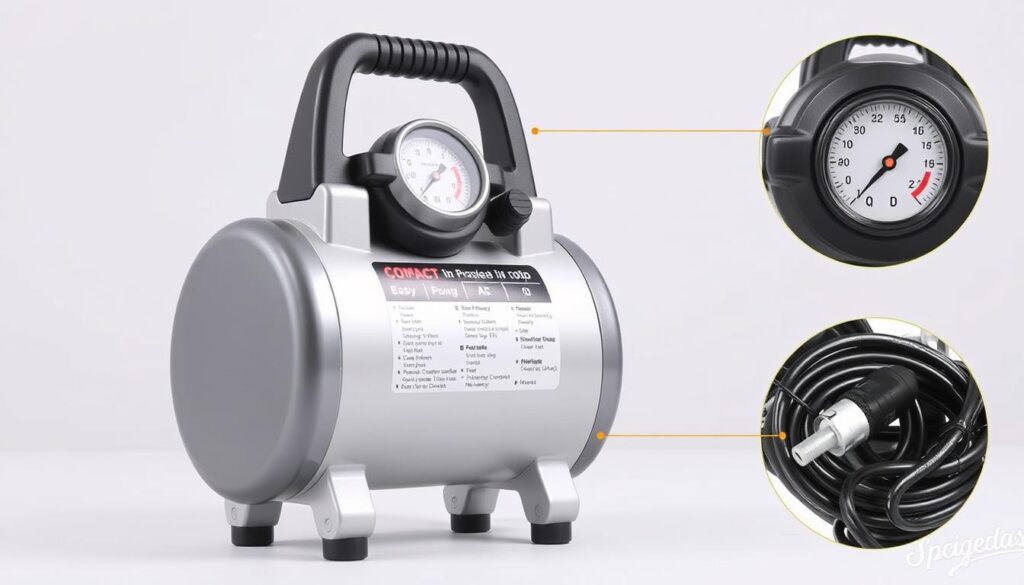
Finding Your Vehicle’s Recommended Tire Pressure
To ensure your vehicle is running at its best, finding the recommended tire pressure is crucial. This information is vital for safety, performance, and fuel efficiency.
Where to Look for PSI Information
You can find your vehicle’s recommended tire pressure in your owner’s manual or on a sticker located on the driver’s side door jamb, doorpost, glove box door, or fuel door. It’s essential to note that the PSI printed on the tire’s sidewall is the maximum pressure, not the recommended pressure.
Front vs. Rear Tire Pressure Differences
Vehicle manufacturers often specify different pressures for front and rear tires due to weight distribution and handling characteristics. For instance, front-wheel drive vehicles may require higher pressure in the front tires to ensure even wear and optimal handling.
How to Properly Check and Maintain Tire Pressure
To ensure your vehicle runs smoothly and safely, regular tire pressure checks are essential. We recommend making it a part of your monthly maintenance routine because tires lose approximately 1 PSI of pressure every month.
When to Check Your Tires
Check your tire pressure when your tires are ‘cold’, ideally before driving or at least three hours after driving. This ensures an accurate reading, as driving can heat up the tires and affect the pressure.
Step-by-Step Pressure Checking Process
To check your tire pressure, first remove the valve cap from the valve stem. Then, press a tire pressure gauge firmly onto the valve stem until you get a steady reading. You might hear a hissing sound, which is normal.
Recording Your Readings
Keep a log of your tire pressure readings to track any changes over time. This helps identify slow leaks or seasonal patterns that may require adjustments to maintain optimal tire performance.
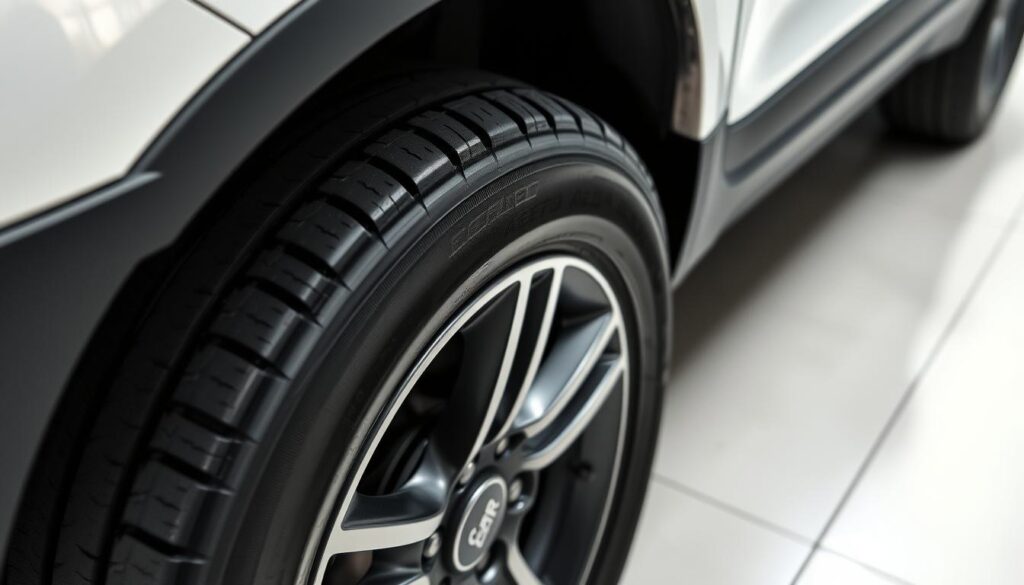
Adding or Releasing Air from Your Tires
Proper tire inflation is key to ensuring your vehicle runs smoothly and safely. When your tire pressure is not at the recommended level, you need to either add air or release it to achieve the correct pressure.
Using a Gas Station Air Compressor
To use a gas station air compressor, first park your vehicle so that the hose can reach all four tires. Insert change into the machine until the motor starts running. Then, fill each tire by placing the hose over the valve stem and pressing the lever. Be aware that using a gas station air compressor means your tires might be “hot,” so you may need to adjust the inflation pressure accordingly.
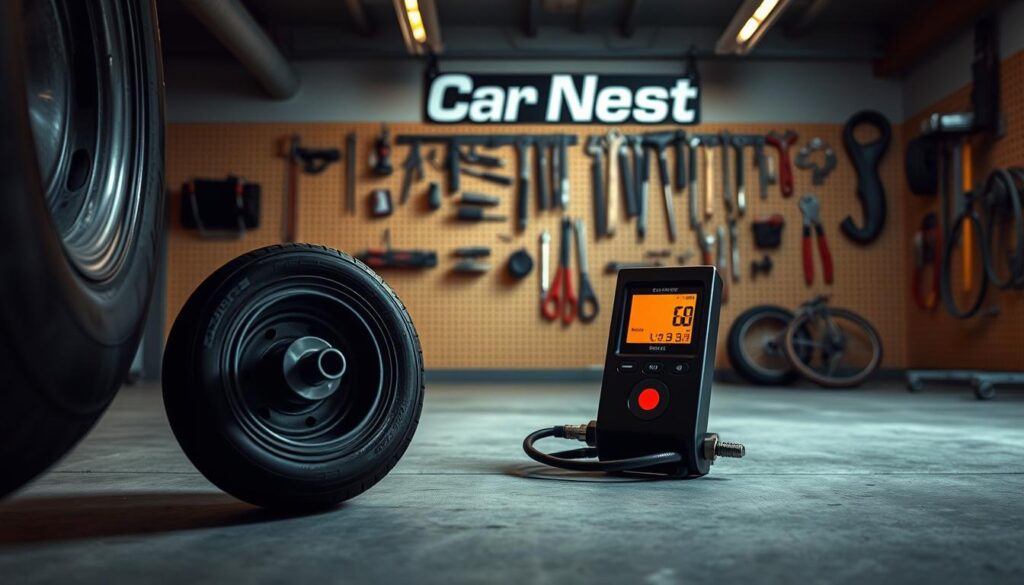
Using a Portable Air Compressor
When using a portable air compressor, ensure you follow the manufacturer’s instructions for setup and operation. Portable compressors can be powered via a 12V car outlet or battery, offering more flexibility than gas station compressors. Monitor the pressure gauge closely as you add air to avoid overinflation.
After adding or releasing air, it’s crucial to check tire pressure again to ensure it’s at the recommended level. This step is important because the initial reading may change after the system stabilizes.
- Always refer to your vehicle’s manual for the correct psi for your tires.
- Be cautious when handling hoses and compressors to avoid accidents.
Common Tire Pressure Mistakes to Avoid
Tire pressure maintenance is a critical aspect of vehicle care, and being aware of the most common mistakes can help drivers steer clear of potential hazards. Both underinflation and overinflation can cause significant problems, including premature tread wear and possible tire failure.
When checking and maintaining tire pressure, several common mistakes should be avoided to ensure safety and optimal vehicle performance. One of the primary errors is overinflating tires, which can lead to a harsh ride and decreased traction, particularly in wet conditions.
Overinflation Risks
Overinflation creates a rigid tire with a reduced contact patch, resulting in uneven wear in the center of the tread. Many drivers mistakenly inflate their tires to the maximum PSI listed on the tire sidewall rather than following the vehicle manufacturer’s recommendations. This can lead to decreased traction and premature wear.
Underinflation Dangers
Underinflation causes excessive tire flexing, generating heat that can lead to internal damage, separation, and potentially catastrophic blowouts. Underinflated tires also experience increased rolling resistance, reducing fuel economy and accelerating wear on the outer edges of the tread.
| Inflation Status | Risks | Consequences |
|---|---|---|
| Overinflation | Decreased traction, premature wear | Harsh ride, uneven wear in the center of the tread |
| Underinflation | Excessive tire flexing, increased rolling resistance | Internal damage, separation, blowouts, reduced fuel economy |
By understanding these risks and taking steps to maintain the correct tire pressure, drivers can significantly enhance their vehicle’s safety and performance. Regular checks with accurate gauges and adherence to the manufacturer’s recommended pressure are key to avoiding the pitfalls of both overinflation and underinflation.
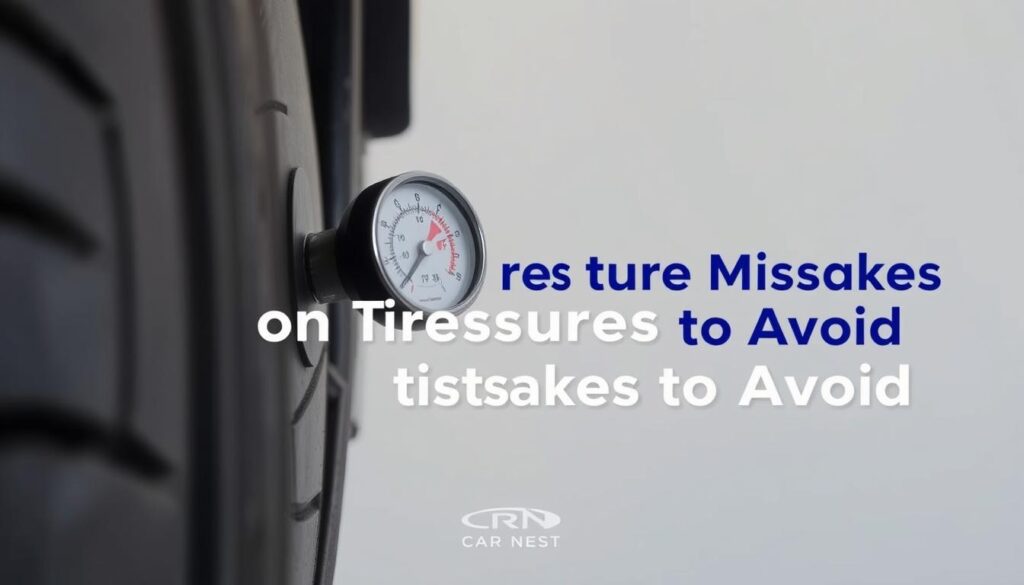
Understanding Your Tire Pressure Monitoring System (TPMS)
Understanding your vehicle’s Tire Pressure Monitoring System (TPMS) is crucial for maintaining optimal tire pressure and ensuring safety on the road. Since 2007, all new vehicles have been required to include this critical safety feature.
A TPMS alerts drivers when tire pressure drops below the manufacturer’s recommended levels, typically when it’s 25% under-inflated. This system can be either direct or indirect. Direct TPMS uses pressure sensors in each tire, while indirect TPMS relies on wheel speed sensors.
What the TPMS Light Means
The TPMS light on your dashboard is an essential indicator of your tire’s status. If the light remains solid, it usually indicates that one or more tires are underinflated. However, if the light blinks multiple times when you start your car, it may signal a problem with the TPMS itself.
- A solid TPMS light typically means low tire pressure.
- A blinking TPMS light often indicates a system malfunction.
Responding to TPMS Warnings
When your TPMS light illuminates, it’s essential to check all tires with a quality pressure gauge to determine the correct course of action. Remember, TPMS is not a replacement for regular manual pressure checks, as it only warns of significant underinflation.
Extreme temperature changes can trigger temporary TPMS warnings, which may resolve once tires warm up during driving. However, persistent warnings require attention to ensure your vehicle is safe to drive.
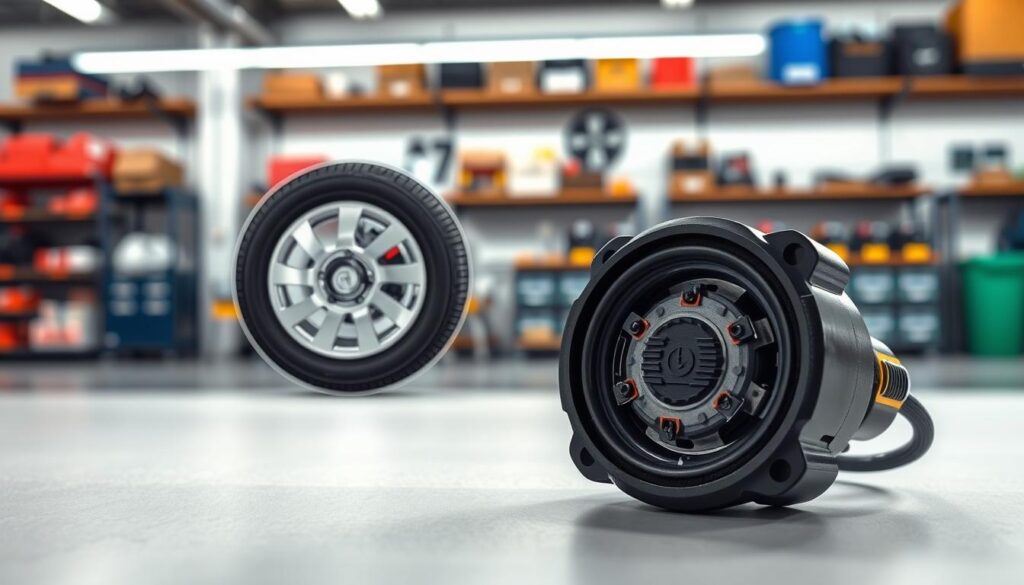
Seasonal Tire Pressure Maintenance
Seasonal temperature fluctuations significantly impact tire pressure, making regular checks essential. For every 10°F change in ambient temperature, tire pressure will change by approximately 1 PSI. This means that during winter, tire pressure can drop dramatically, while in summer, it can increase.
Winter Tire Pressure Considerations
During winter, it’s crucial to check tire pressure more frequently due to the cold temperatures. A common myth is that reducing tire pressure improves traction on snow; however, this is dangerous and can lead to reduced tire lifespan and increased risk of tire damage. Instead, maintain the recommended PSI as specified in your vehicle’s manual.
Summer Heat and Your Tires
In the summer, tire pressure can increase due to the heat, potentially leading to overinflation. It’s essential to check tire pressure regularly, especially during rapid temperature changes. Maintaining the correct tire pressure helps prevent tire wear and reduces the risk of blowouts.
Conclusion
We’ve covered the essentials of tire pressure maintenance to help you drive safely and efficiently. Regular tire pressure checks are one of the simplest yet most effective ways to improve vehicle safety, performance, and fuel economy while extending tire life.
To maintain proper tire inflation, check your tire pressure at least monthly and before long trips using a quality pressure gauge and following your vehicle manufacturer’s specifications. Remember, temperature changes significantly affect tire pressure, so seasonal adjustments are essential.
By following these guidelines and using a reliable TPMS as a backup, you’ll ensure optimal tire performance and maximize safety. For personalized advice, feel free to contact our tire experts via WhatsApp at +44-7822010953.
